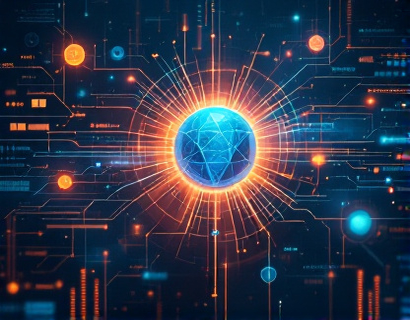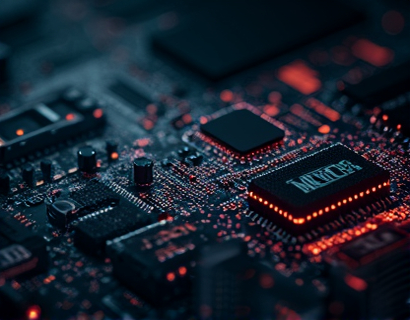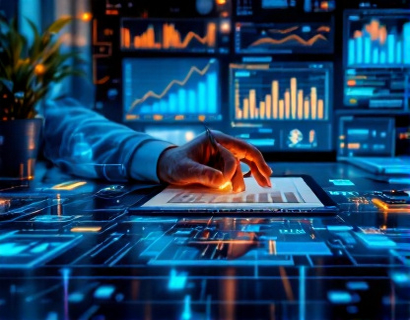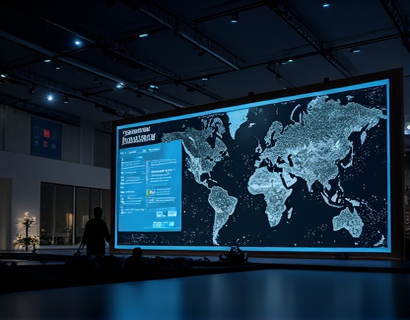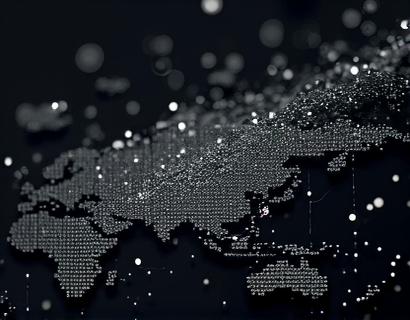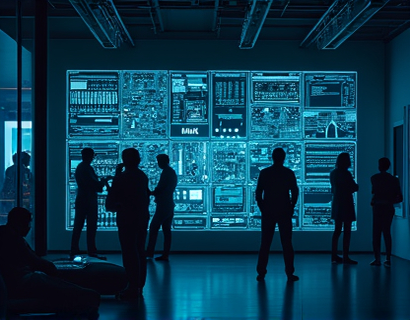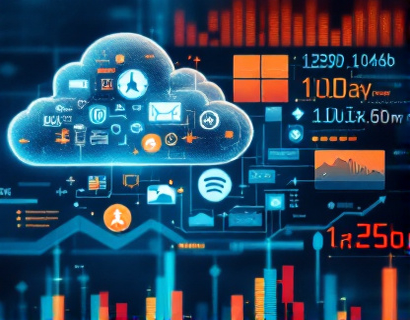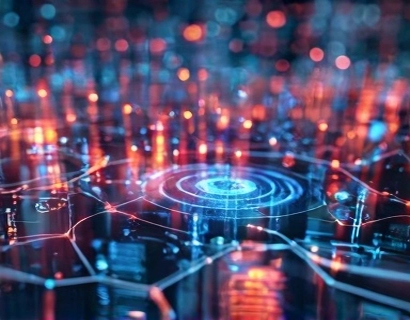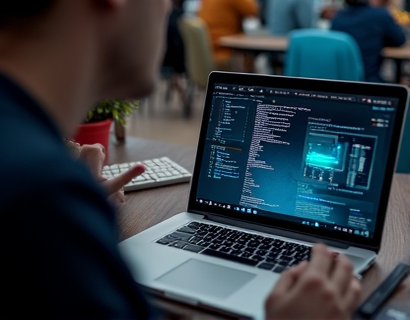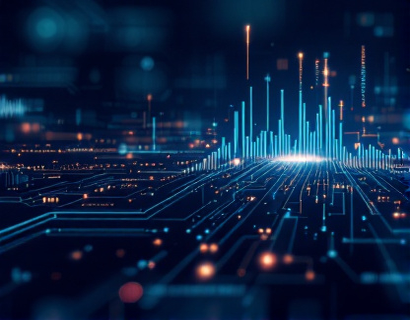Decentralized Productivity: Turbo-Charged with AI and Crypto Integration
The intersection of artificial intelligence and cryptocurrency is giving birth to a new era of decentralized productivity tools. These cutting-edge technologies are not just evolving independently but are merging to create advanced systems that significantly enhance efficiency and redefine user experience. This article delves into the transformative impact of this fusion, exploring how it is revolutionizing workflows and setting a new standard for digital innovation.
In the past, productivity tools were often centralized, relying on single points of control and vulnerable to bottlenecks and security risks. The advent of blockchain technology and AI has changed this paradigm. Decentralized applications (dApps) powered by smart contracts and AI algorithms offer a more robust, secure, and efficient alternative. These tools leverage the transparency and immutability of blockchain while harnessing the computational power and learning capabilities of AI.
Enhanced Security and Trust
One of the primary benefits of integrating AI and cryptocurrency in productivity tools is the enhanced security and trust they provide. Blockchain's decentralized nature ensures that no single entity has control over the entire system, reducing the risk of data breaches and manipulation. AI algorithms can further bolster security by detecting and mitigating potential threats in real-time. For instance, machine learning models can analyze patterns and identify anomalies that might indicate a security breach, allowing for proactive measures to be taken.
Trust is another critical aspect. Users can verify transactions and data integrity through blockchain's transparent ledger, which AI can monitor and analyze to ensure accuracy and consistency. This combination fosters a higher level of trust among users, encouraging broader adoption and more collaborative work environments.
Optimized Workflows through AI
AI plays a pivotal role in optimizing workflows within decentralized productivity tools. Machine learning algorithms can analyze user behavior and preferences to automate repetitive tasks, suggesting the most efficient paths for completing complex projects. For example, an AI-powered dApp could automatically route tasks to the most suitable team members based on their availability, skills, and past performance, streamlining collaboration and reducing delays.
Predictive analytics is another area where AI shines. By analyzing historical data and current trends, AI can forecast project timelines, resource requirements, and potential bottlenecks. This foresight allows teams to adjust their strategies proactively, ensuring smoother project execution and higher productivity. AI-driven dashboards can provide real-time insights, enabling users to make informed decisions quickly.
User-Centric Design with AI
The integration of AI in decentralized productivity tools also focuses on enhancing user experience. AI can personalize the user interface and experience based on individual preferences and usage patterns. For instance, an AI system might adjust the layout of a workspace, prioritize notifications, or suggest tools and resources that a user frequently uses. This level of personalization makes the tools more intuitive and user-friendly, reducing the learning curve and increasing adoption rates.
Natural Language Processing (NLP) is another AI technology that enhances user interaction. Chatbots and virtual assistants powered by NLP can handle routine inquiries, provide guidance, and assist users in navigating complex workflows. This not only improves efficiency but also frees up human resources for more strategic tasks.
Decentralized Data Management
Data management is a critical component of productivity tools, and decentralized solutions offer significant advantages. Blockchain-based data storage ensures that information is distributed across multiple nodes, making it resilient to failures and attacks. AI can optimize data storage and retrieval processes, ensuring that data is accessible when needed while maintaining privacy and compliance with regulations.
Decentralized Identifiers (DIDs) and self-sovereign identity systems, powered by AI, allow users to control their data and decide who can access it. This empowers users to maintain ownership of their information, reducing the risk of data misuse and enhancing privacy. AI can manage and enforce these access controls, ensuring that data sharing is secure and compliant.
Incentivization and Tokenomics
The integration of cryptocurrency in productivity tools introduces new mechanisms for incentivizing user participation and contribution. Tokenomics, the study and design of token-based economies, plays a crucial role in this. By issuing tokens that represent value within the ecosystem, platforms can motivate users to contribute resources, complete tasks, and engage in collaborative efforts. AI can dynamically adjust token distributions based on user behavior and contributions, ensuring a fair and efficient reward system.
For example, a decentralized project management platform might use tokens to reward team members for completing tasks, providing high-quality work, and contributing to the community. AI can analyze the impact of these contributions and allocate tokens accordingly, fostering a culture of collaboration and excellence.
Scalability and Interoperability
Scalability is a key challenge for decentralized productivity tools. AI can help address this by optimizing network resources and managing load balancing. Machine learning algorithms can predict traffic patterns and adjust the allocation of computational resources to ensure smooth performance even during peak usage times. This ensures that the tools remain responsive and reliable, regardless of the number of users.
Interoperability is another critical aspect. AI can facilitate seamless integration between different decentralized platforms and traditional systems. By creating bridges and protocols that enable communication and data exchange, AI ensures that users can leverage the best tools from various ecosystems without friction. This interconnectedness enhances the overall productivity and flexibility of the tools.
Case Studies and Real-World Applications
Several real-world applications demonstrate the potential of AI and cryptocurrency integration in productivity tools. For instance, a decentralized content creation platform uses AI to manage copyright and royalty distributions, ensuring that creators are fairly compensated for their work. The platform's blockchain-based ledger tracks all transactions, and AI algorithms monitor usage and payments, providing transparency and trust.
Another example is a decentralized research collaboration tool that uses AI to manage data sharing and access control. Researchers can securely upload and share data, with AI ensuring that only authorized users access sensitive information. The system also uses predictive analytics to suggest optimal collaboration strategies, enhancing the efficiency of research projects.
Future Prospects and Challenges
The future of decentralized productivity tools powered by AI and cryptocurrency is promising, but it also comes with challenges. One major challenge is user adoption. The complexity of blockchain and AI technologies can be daunting for some users, requiring intuitive interfaces and comprehensive onboarding processes. Education and community building will be essential in overcoming this barrier.
Regulatory compliance is another area that needs attention. As decentralized systems operate across borders, navigating varying legal frameworks can be complex. AI can help by providing real-time updates on regulatory changes and ensuring that platforms remain compliant. However, continuous monitoring and adaptation will be necessary to stay ahead of regulatory developments.
Technical challenges, such as scalability and interoperability, also need to be addressed. While AI can optimize these aspects, ongoing research and development are required to create more efficient and seamless decentralized systems. The community's collaboration and innovation will be crucial in pushing the boundaries of what is possible.
Conclusion
The fusion of AI and cryptocurrency is revolutionizing productivity tools, offering enhanced security, optimized workflows, and a superior user experience. As these technologies continue to evolve, we can expect even more innovative solutions that transform the way we work and collaborate. For tech enthusiasts, professionals, and early adopters, embracing this decentralized and AI-driven future is not just an option but a necessity for staying ahead in the digital landscape.





